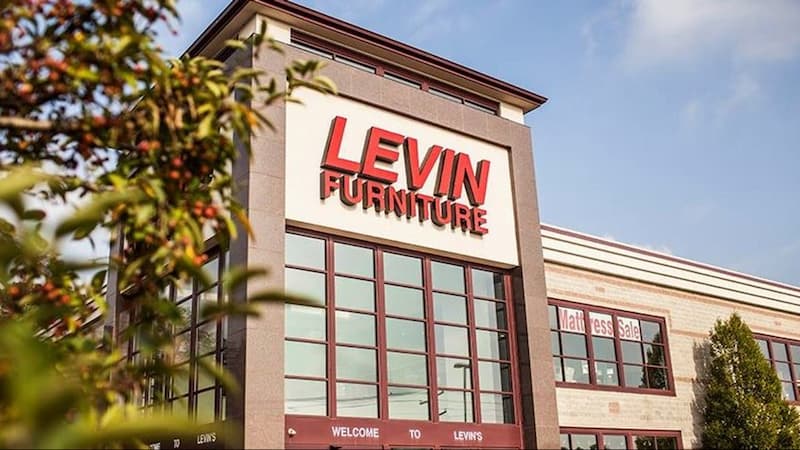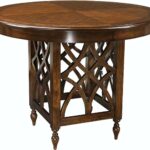The extreme demand the furniture industry saw due to the COVID-19 pandemic seems to be all but a distant memory as economic conditions deteriorate and concerns about a recession rise.
Right now, the abrupt decline in demand is a problem. Retailers placed numerous furniture orders when demand was high and lead times were lengthy. However, when supply and demand unexpectedly improved, retailers were left with far too much inventory. Due to their inability to predict the appetite of retailers, suppliers are in a difficult situation.
Additionally, suppliers have a lot of inventory on hand, and many are finding it difficult to make a profit on products they ordered when ocean rates were extremely high.
“The challenge is that we have too much inventory at too high of a price,” said Micah Swick, president of Bernards Furniture. “All of it came with high container rates. Product is now five times cheaper than what it was six months ago. The challenge is getting rid of that inventory at a rate that allows you to stay in the black.”
The current problem is planning, according to American Woodcrafters, an Indonesian importer of mid-priced case goods.
“With Chinese New Year coming, there’s going to be a large break,” said Rusty Morris, vice president of sales. “Many of our container-direct customers are hesitant to give us forecasting too far out. We used to get a six-month plan. Now we’re getting no plan.
“While we don’t ship out of China and Vietnam, we do rely on them for parts to some degree,” he continued. “For cutting schedules, we have to plan that. We’re trying to be accommodating as possible. But we’re telling people, parts are an issue. We need a rough estimate of what your needs will be.”
It’s challenging to predict consumer demand. Even though it is unquestionably down right now, it is difficult to predict how much and for how long. Many suppliers are utilizing the period of unpredictability to enhance different aspects of their businesses. Others are attempting to expand their market share.
“Our strategy for 2023 is all about market share,” said Swick at Bernards. “We’re also in the middle of growing our distribution channels.”
“Our main goal for 2023 is to get all facets of our operations back to (or better than) pre-pandemic functioning,” said Tim Donk, vice president of sales for Legends Furniture. “Business is tough, but we are optimistic about 2023 and are forecasting 10% to 15% growth.”
- What Does 2023 Look Like?
The outlook for the year is mixed among suppliers; some are cautiously optimistic, while others predict a difficult first half.
“We are cautiously optimistic about the state of the industry,” said Jason Phillips, vice president of the Phillips Collection. “Travel and market attendance seems to be approaching pre-COVID levels, which is extremely encouraging. We temper that optimism with the reality that retailers are in high stock positions and consumers have had their mid-pandemic-home-decorating-frenzy.
“Housing and the furniture industry are in a 20% correction,” said Gat Caperton, president of domestic manufacturer Gat Creek. “Lower price points went into the correction first and higher price points later, but everyone is in now. Most will overcorrect. The industry is lumpy through the first half of 2023 but will obtain a good equilibrium by Q3. I’m very optimistic about the long-term. Of course, I don’t quite know when we will get there.”
High-end importer Hekman anticipates a challenging start to the year before things get better.
“Business is okay, but it’s slowing,” said Jim O’Keefe, vice president of sales. “We had great attendance at High Point Market, maybe up a third over last time. But order volume was down significantly. People told us that their foot traffic is down, and warehouses are full.
“We’re forecasting a tougher start to the year, but I think we’ll come out of it either Q2 or Q3,” he continued. “It all depends on the ‘unknowable’ things, like the economy and inflation.”
Many Vietnamese furniture factories have extended their Lunar New Year closure times due to lower than usual orders, which starts in January. 22. Although the precise dates for the closures vary by factory, many are set to start as early as December.
“All six of the factories we source from will close the last week of December,” said Donk at Legends. “They’re not getting many new orders, and the ones they are getting are for post-Lunar New Year. There’s too much inventory, and business is soft.
“We’re not necessarily worried,” he continued. “We introduced two groups at market that we’re not expecting until April anyway. We have enough existing inventory, and we can pull from our warehouse. We’re sitting in a good position with our domestic factory.”
- Logistical Concerns
For suppliers, logistical problems are a factor in addition to decreased consumer demand and excess inventory.
As long as fuel prices stay high, domestic freight has displaced ocean freight as the main logistical challenge for many.
“Inland freight is awful,” said Morris at American Woodcrafters. “Pricing is ridiculous. Fuel and labor costs are up. It’s making it difficult for our strategy of expanding West of the Mississippi.
“The other thing that’s making it interesting is the shakeup of companies buying others, like Brooks Furniture buying Shelba Johnson. We have a lot of customers that use each. I don’t know how that’s going to work out.”
Hekman’s ocean freight business has improved, but, like American Woodcrafters, it still faces challenges inland.
“Trucking companies continue to have more power than we would like,” said O’Keefe. “I’m waiting for the pendulum to swing in our favor. It always seems like a conspiracy of factors: Driver shortage, diesel prices, etc. But I see a reduction in demand for consumer goods, which could lower demand for inland freight. Hopefully that will lead to better pricing, but we’re not seeing that yet.”
Some believe that things are slowly but surely getting better.
“We see pricing coming down for inland freight, which is sorely needed after the exorbitant prices we experienced during the pandemic,” said Phillips. “Our big focus remains accountability with the bookings we have planned so we forecast our inventory as accurately as possible.”
Fuel prices are decreasing, which is good news for Martin Furniture.
“With fuel prices receding, maybe land freight will be reduced,” said Gil Martin, company founder and CEO. “Fortunately, ocean freight has declined in cost dramatically. We wonder where that will balance out.”
- Tip-over Legislation Looms
The CPSC’s recently passed final rule regarding furniture tip-overs is another major source of worry. The regulation, which was opposed by the American Home Furnishings Alliance when it was first announced in 2021, calls for intricate testing procedures and will be difficult for suppliers to comply with. There is worry about it because it will become effective in May 2023.
“Being a nearly 100% case goods manufacturer, our primary focus is the new final rule on furniture stability passed by the CPSC in October,” said Luke Simpson, president of Durham Furniture. “All of our efforts are going into testing, design changes as necessary, etc., to ensure our product will be compliant by the eventual effective date.”
“It’s a steep challenge to meet it,” said Ben Copeland, director of sales and marketing at the domestic Copeland Furniture. “We will do whatever we need to do.”













